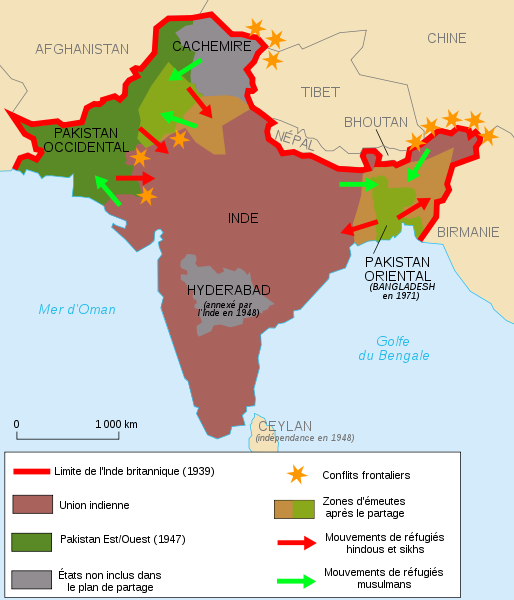There were two majorities in India, Hindus and
Muslims. Hindus are represented by the Congress and Muslims by the Muslim
League. Between the two wars world, an important nationalism has grown principally
thanks to Gandhi’s actions. Indeed, he developed protestations against the
British domination but without violence. So in 1929, London signed the “Indian
Act” which gives a form of autonomy to India.
Gandhi (1869-1948) was a political leader, a spiritual leader of India and the independence movement in this country.
With the second War World, the nationalism in India has grown again and in 1942, the Congress invented the slogan “Quit India” which is or the British, all Indian wants that British domination stopped. There were a lot of demonstrations and troubles, but repressed by the British.
With the second War World, the nationalism in India has grown again and in 1942, the Congress invented the slogan “Quit India” which is or the British, all Indian wants that British domination stopped. There were a lot of demonstrations and troubles, but repressed by the British.
After the end of the war, the negotiation restarted. The
United Kingdom accepts the independence only with the guarantee that India will
be united and that minority rights will be respected. Negotiations are slowed
because of the non-cooperation of the two nationalist parties. The Muslim
League led by Jinnah, proposed in 1940 the creation of a Muslim state,
Pakistan, while the Congress Party, led by Nehru wants a united Indian state.
From 1946, the solution of a united state is denied; many bloody and violent troubles erupted, especially in Calcutta in August 1946. The British wanted to quit the country and to be cleared of this problem. In February 1947, the first minister of United Kingdom declared the evacuation of India. The independence is declared August 15 and 16, 1947. The territory is separated in two parts, The Indian Union, with Hindus majority and the Pakistan with Muslim majority. But because of the independence there were lots of violence, about 400 000 dead and 10 to 15 million people have been displaced at the border.
India after the decolonization


Aucun commentaire:
Enregistrer un commentaire